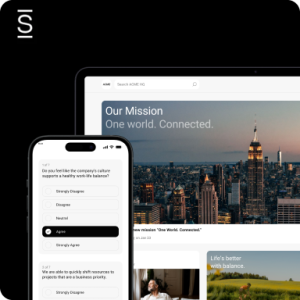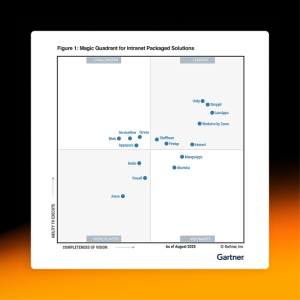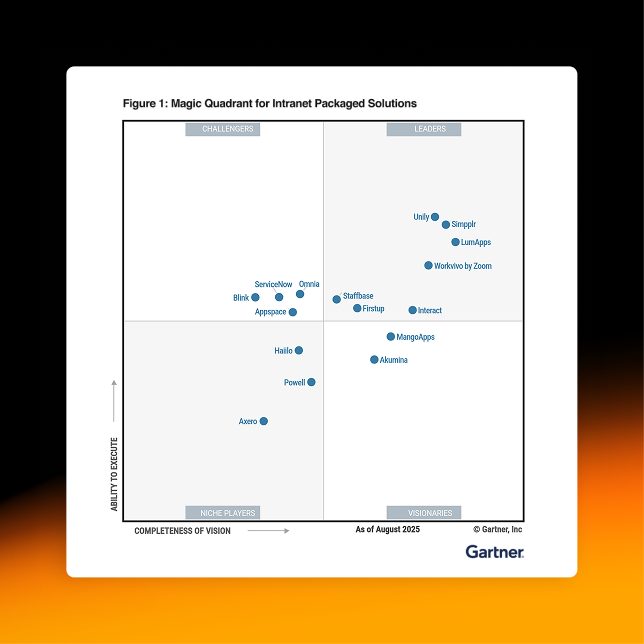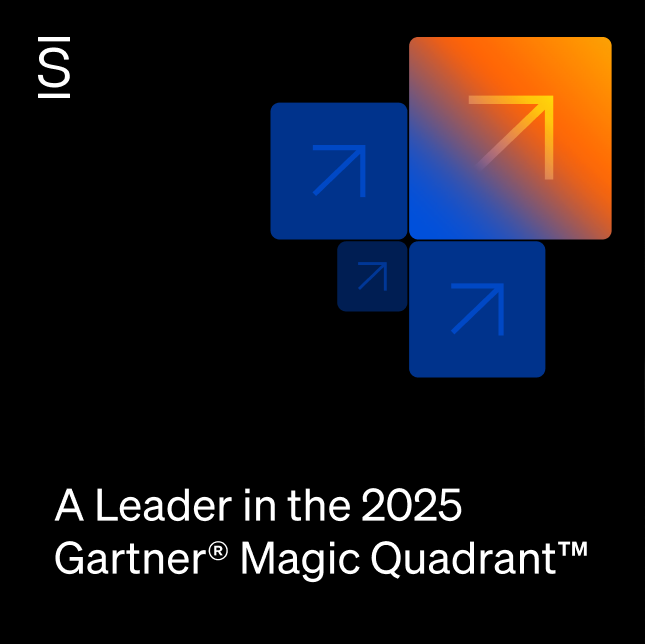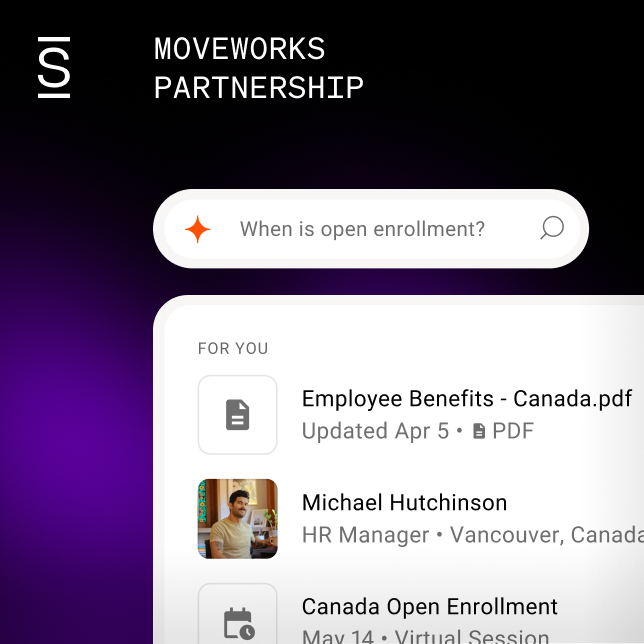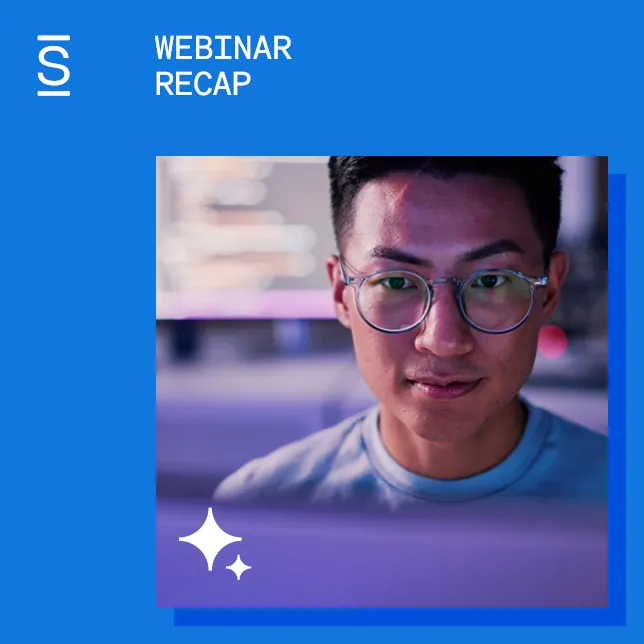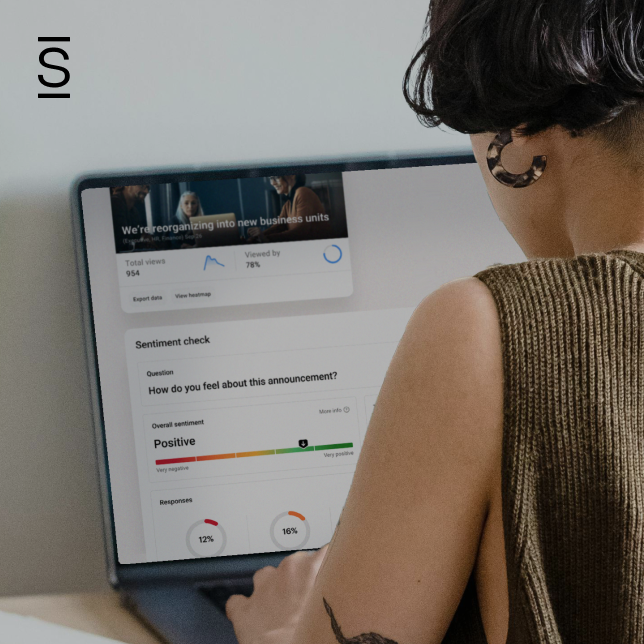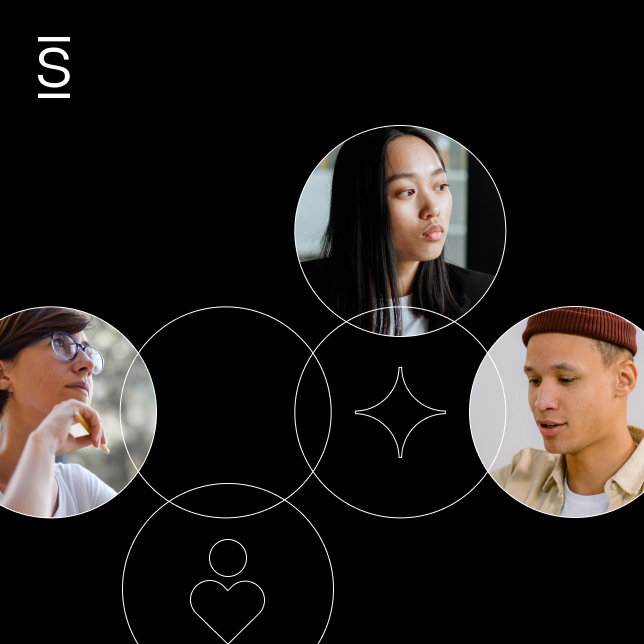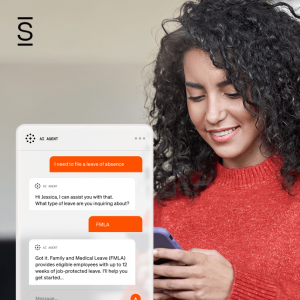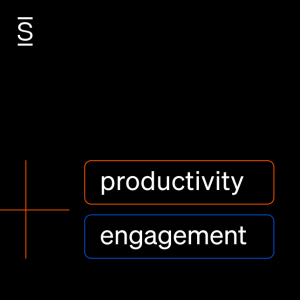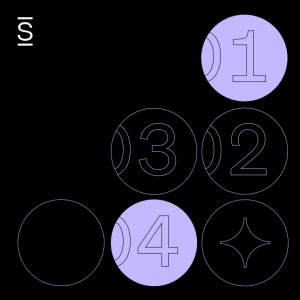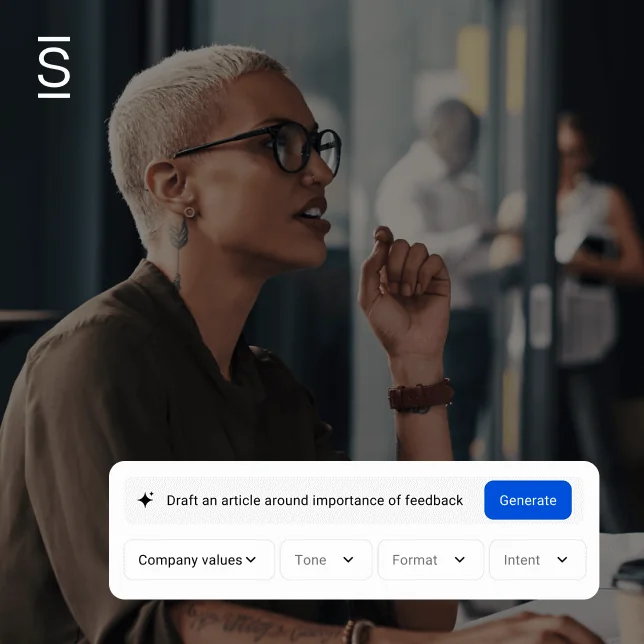In the rapidly evolving field of artificial intelligence (AI), it can be tough to distinguish between myth and reality. The challenge intensifies for organizations exploring the use of generative AI in employee-facing applications.
So Simpplr brought together a group of experts in a webinar that cuts through the hype, moderated by Simpplr Chief People & Experience Officer Miriam Connaughton. These AI mythbusters — Parag Kulkarni, Chief Technology Officer at Simpplr, and Akshay Bhushan, Partner at Tola Capital — draw a line between fact and fiction.
Scroll down for highlights and be sure to watch the complete webinar for the full story!
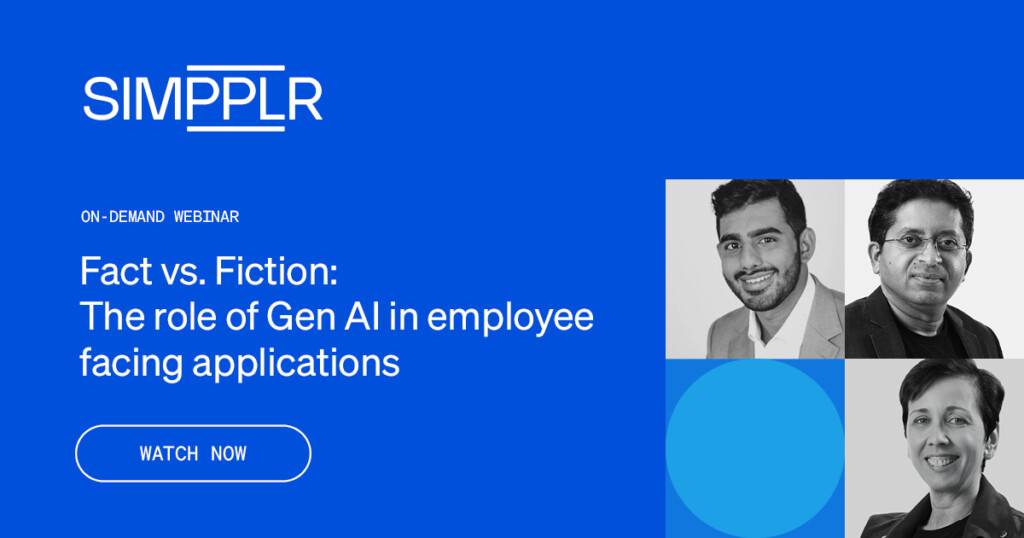
Note: Some quotes have been gently edited for clarity.
Fact: AI has triggered a ‘seismic shift’ in the workplace
“I think this is the biggest technological shift since the cloud and will likely be much bigger. A decade from now we’re going to have significant transformations in how people work.” ~ Akshay Bhushan
Rapid advances in generative AI have made the technology more accessible to the masses, with tools like ChatGPT and GitHub Copilot inspiring the potential for massive gains in productivity and efficiency across all sectors of business via AI-powered automation, assistance and more. “It sparks the imagination of every worker and every employee,” Akshay says. “A marketer can understand the impact ChatGPT can have on copywriting or new generative AI can have on video creation. An engineer can see GitHub Copilot or ChatGPT and understand how it affects their ability to write code.”
“This is a seismic shift in terms of the technology,” Parag agrees.
Although AI has been used in some shape or form for the past 15 to 20 years (think neural networks and big data), its widespread accessibility now is sending shockwaves through the workplace. Pair that availability with the ability of large language models (LLMs) to process and analyze vast swaths of data, and the window of opportunity blows wide open for enterprise applications.
“It has really spurred so many advancements,” Parag says, noting how Simpplr has leveraged generative AI for automation, personalization, content generation and predictive modeling to improve the employee experience across various use cases. “There are lots of facts in terms of how AI is helping us,” he says. “There is also some fiction.”
Related: ChatGPT for IT
Fiction: Generative AI is always trustworthy and secure
“There are some guardrails that we should be very careful about.” ~ Parag Kulkarni
If you think the rewards of AI come without risks, think again. Organizations must take a proactive approach to identifying inaccurate information, hidden biases, and data privacy and compliance issues.
AI + accuracy
“Everybody’s using AI, but not everything we get from AI is necessarily accurate,” Parag says. He gives an example of an employee getting inaccurate benefits information from a company-built bot. “Then they make life-changing decisions based on that information. That’s a bad thing and it has happened.”
AI + bias
LLMs also cull data with built-in societal biases — as exemplified by the recent debacle with Google’s Gemini AI. “That’s a perfect use case of where I think we have to be careful or else we are reinforcing the biases that are already present and making things worse,” Parag says.
AI + security
And then there’s the issue of data privacy and security. “I think it’s helpful to get ahead of the curve in this case,” Akshay says. While some basic AI governance and compliance standards are starting to fall into place (e.g., NIST), in addition to guidance about safe deployment in a work environment, organizations must focus on more rigorous guidelines to help ensure secure and responsible use of generative AI in the workplace.
“How do you see to it that this massive amount of data that’s being used is also being used securely? That it is transparent? That you’re using it ethically?” Parag asks. “Especially in an enterprise space, I think it is essential that companies really think about the right policies. Who gets to use what? Can you put confidential information in a public chatbot? The answer is no.”
Related: Ethical AI in software development
Fact: AI can unlock enormous efficiencies — but start with small swings
“I firmly believe that once people understand basic principles and see products that inspire them, they will see the revenue and the cost opportunities that are available for them to do their work more efficiently.” ~ Akshay Bhushan
Forward-thinking organizations that embrace the potential of responsible AI can see tremendous improvement in operational efficiencies, achieving new levels of growth. Generative AI in employee-facing applications can streamline common processes by automating them, facilitate stronger collaboration by acting as a helpful “copilot,” and quickly surface information individuals and teams need to work faster and with less friction.
Parag cites a few stats that attest to the need for this tech:
- 62% of the workday is lost to repetitive, mundane activities
- 47% of digital workers find it difficult to get information to do their job efficiently
“Imagine how productive teams might be if AI removed part of the strain off their shoulders,” Parag says.
Employee-facing applications such as AI-powered enterprise search, writing assistance and workflow automation “can really make an immediate difference in terms of productivity.”
Miriam personally sees these productivity gains when using Simpplr’s Writing Assistant to draft HR comms. “It literally takes me three minutes instead of 30 — that is a huge gain in the workday,” she says. “I think it’s going to be those small wins that are going to build the momentum for bigger things.”
That’s the key: Start small and build on what you learn.
“You don’t want to start big and try to boil the ocean and solve world hunger immediately,” Parag says. “Start small.”
Involve the workforce
Akshay advocates a “bottoms-up” approach — map out areas where generative AI can improve efficiencies at the departmental or use-case level, then engage employees to make them part of the process. “I find that more and more when individual employees see what advancements in workflow automation, what search can do, they’re speaking up and starting to innovate themselves and request new products,” he says. “Most people don’t want to do their work inefficiently.”
Related: What you need to know about GenAI and employee efficiency
Fiction: AI is a silver bullet
“I think the challenge today is all about the fear of missing out.” ~ Parag Kulkarni
In the race to reap the benefits of AI in the workplace, FOMO takes center stage. “Everybody thinks they should use AI. AI will solve every problem. It is the silver bullet. Not true,” Parag says. “There are lots of things you have to do to make it really work for you.”
When exploring the use of GenAI in employee-facing applications, Parag says the people driving tech innovation and/or adoption at their organizations — like CIOs and CTOs — need to think about:
- Very clear business objectives for the technology. “Don’t start with, ‘I want unlimited AI.’”
- Data readiness. “There’s a lot of hard work that needs to go into getting data ready to truly help you, especially in the enterprise world.”
- Availability of sufficient skills and resources. “I think we tend to underestimate, even after you have built the right AI solution, how important it is to have the right skills and resources to get the best out of it.”
Focus on upskilling and reskilling
Upskilling and reskilling are two words that should be at the forefront of tech leaders’ minds, Akshay adds.
“The key thing is upskilling and reskilling your people to make sure they’re taking advantage of these trends so it’s a force multiplier for your business. And the opposite is true — if you’re not taking care of this opportunity and empowering your existing employees and workforce to take advantage of this, you’re falling behind.”
Fact: Take an ‘E.A.I.’ approach to implementing AI in the workplace
“Experiment, align, implement. Most folks are doing it backwards.” ~ Akshay Bhushan
Akshays sees too many organizations implementing AI solutions before aligning with their employees and experimenting with the new tech. Encourage employees who see low-risk opportunities to work more efficiently with AI to test it. If it works, help all employees understand the potential impacts. Then implement the AI solution organization-wide.
Parag agrees with this measured approach — taking foundational steps to solve for specific employee use cases, gaining traction from these quick wins, and growing from there. “The way I look at AI, it’s not a destination, it’s a journey that we’re going to be on. … All of us will make mistakes, but we will learn from those mistakes. That’s the way to harness the true potential of AI.”
Watch the webinar to dive deeper into GenAI for employee-facing applications
Want to learn more? Be sure to watch the full webinar for deeper insights into the role of AI in employee facing applications, including:
- How AI-powered personalization can ensure that employees receive the information that matters most to them — saving time, streamlining workflows (like onboarding), and elevating the employee experience
- What you need to ask SaaS providers when evaluating new software
- Whether lessons learned from the cloud should drive AI strategy
- The real impact on jobs
… and lots more.
Request a demo to discover how Simpplr, a member of the Responsible AI Institute, can help.


